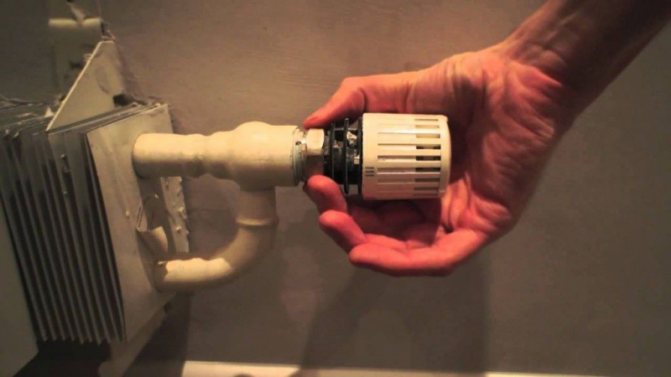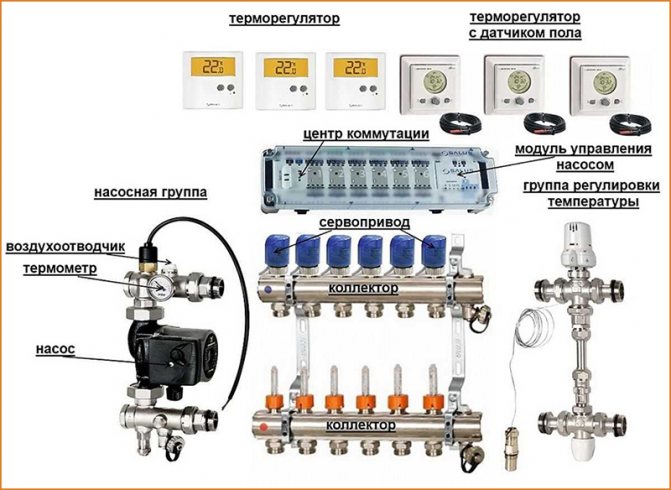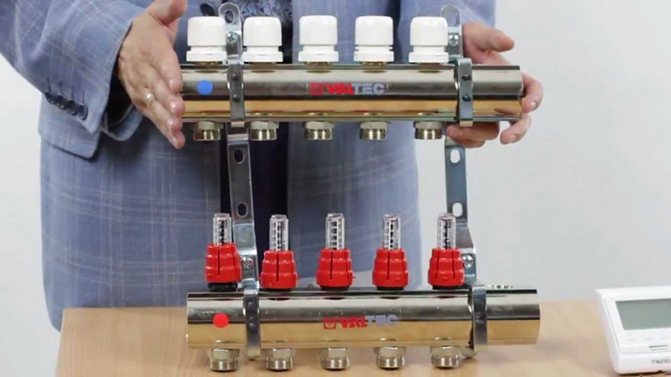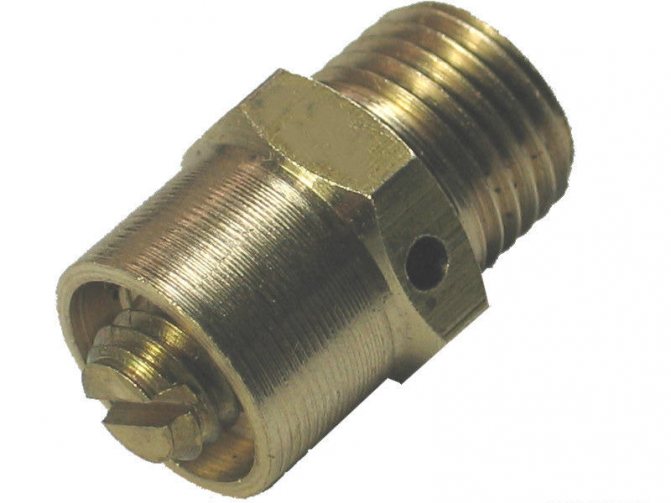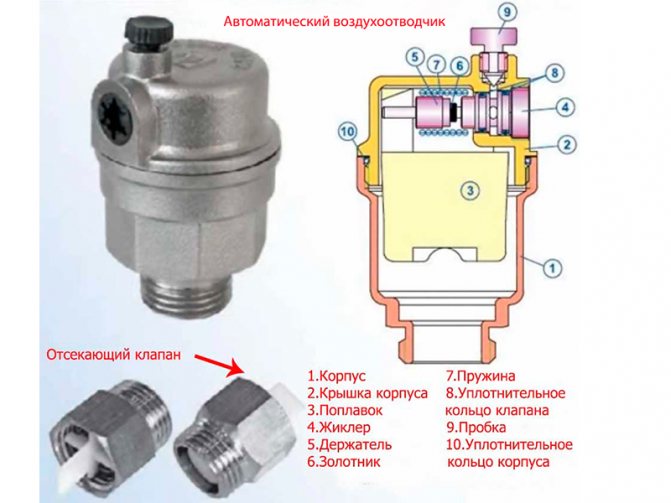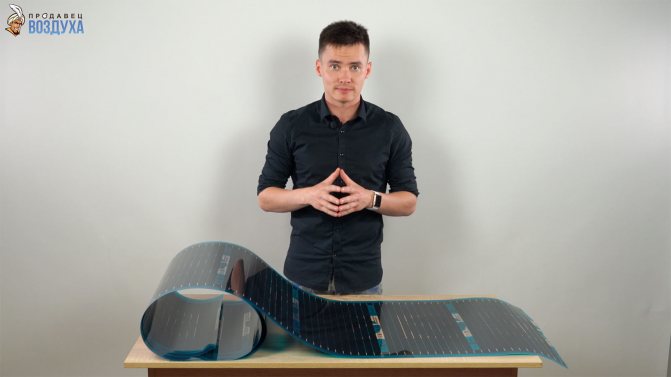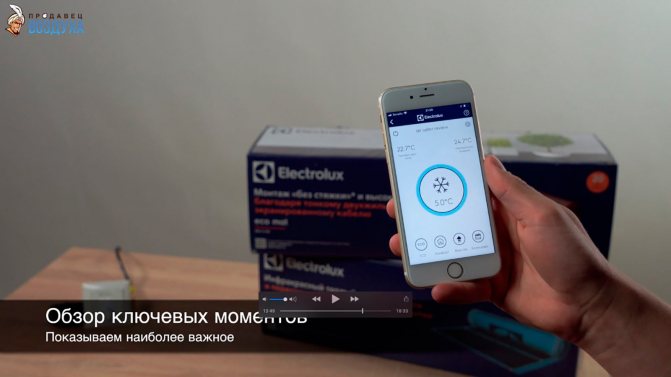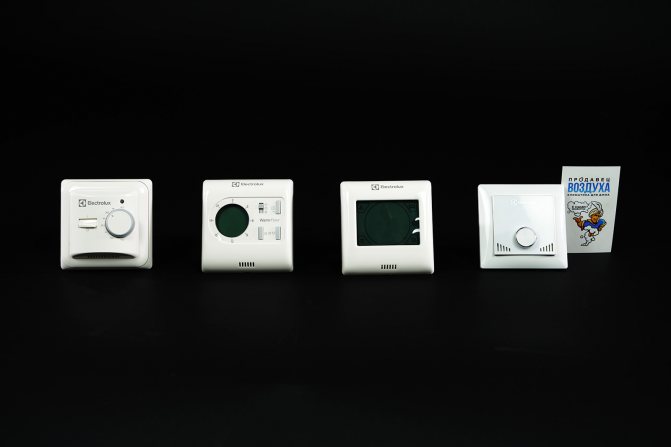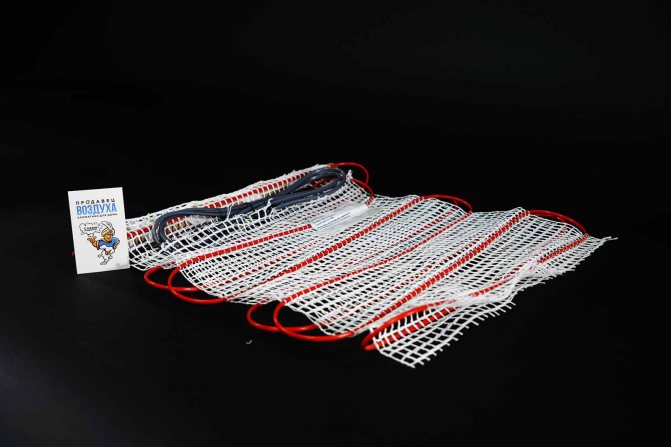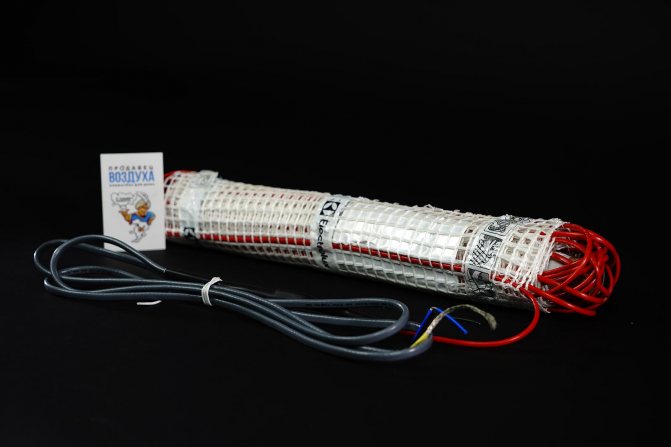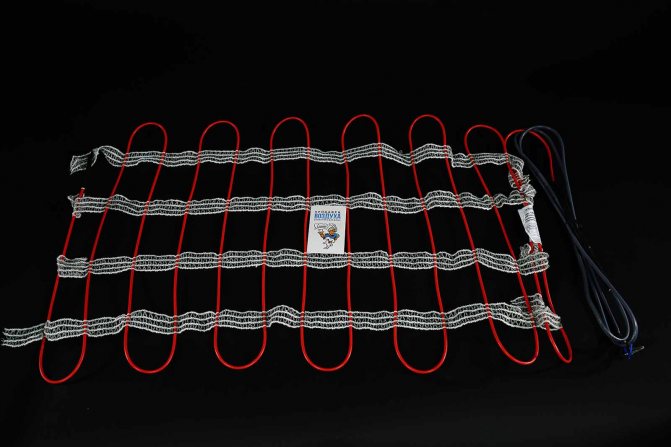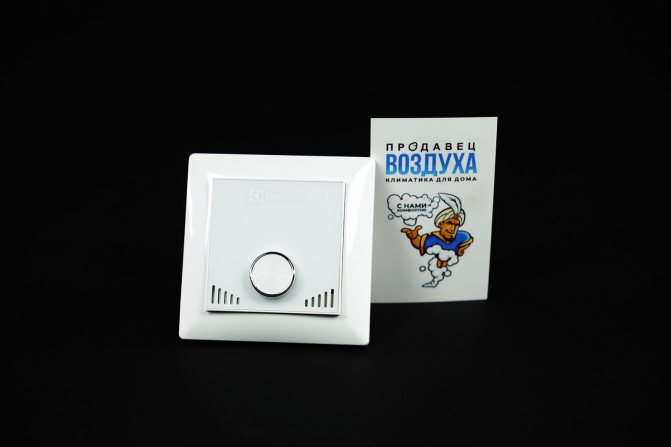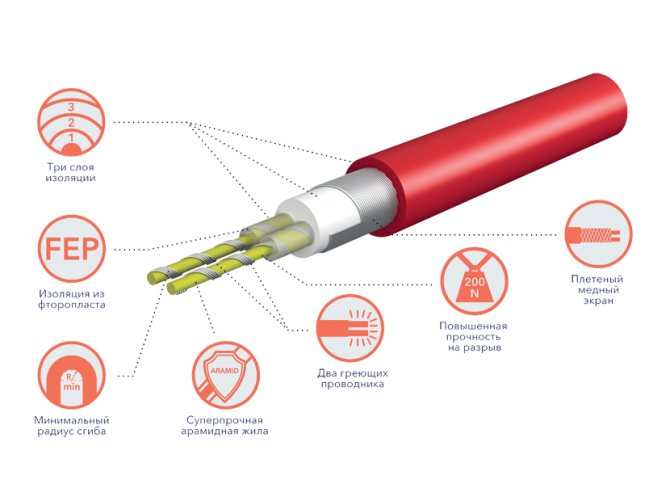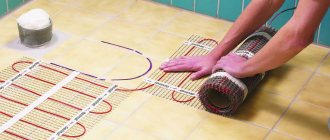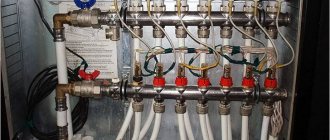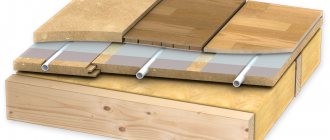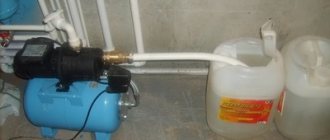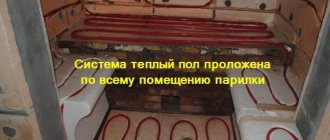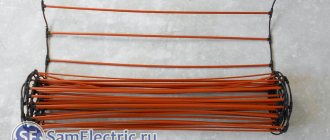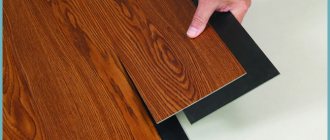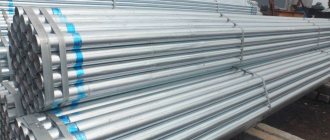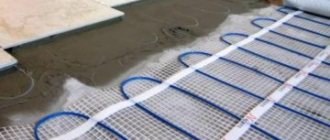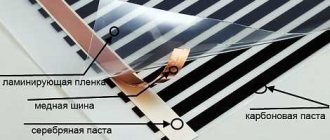Causes of air congestion in water floors
The airing of a water heated floor occurs for several reasons:
- Violations of recommendations regarding operation - a sharp decrease in pressure in the heating circuit, excessive heating of the coolant leads to the appearance of traffic jams.
- Technical problems - the lack of tightness of the joints, the presence of leaks lead to the formation of plugs in the system. Violations of the installation of the water circuit remain one of the main reasons for airing. Errors include: laying the pipe at a slope, the presence of bumps in the place where the pipeline passes, improper installation of the manifold, the absence of taps for automatic pressure relief.
- Violations associated with the first start of heating - according to the instructions, before starting to operate the water circuit, it is necessary to pump air. So pumping is a painstaking and time-consuming process, some teams simply leave the maintenance to the customer himself.
Before starting the heating for the first time, it is extremely important to release air from the pipes of the underfloor heating, even before the heating medium is heated.
Components of equipment
It is worth considering in more detail the parts of the system that were mentioned above.
Disassembled crane
The principle of operation is described in the air release instructions. The design of Mayevsky's crane is easier to study with the help of this figure. Such a miniature product is installed instead of a plug at the top of the manifold manifold. There is a thread in the central part. A screw is screwed into it, pressing the plastic seal.
To ensure the tightness of the connection, a rubber ring is used. All listed parts are included in the standard equipment of the product. No additional consumables are required for installation and operation.
The use of automated devices greatly simplifies the implementation of the task. Without careful control by the user and additional settings, they are capable of performing their functions over a long service life.
Automatic gas diverter
Here is a schematic diagram of one of the devices in this category:
- The assembly (1) creates a rigid attachment of the rod (2) to the inside of the body at the desired angle. They regulate the level of opening of the exhaust valve.
- During operation, air accumulates at the top. The float goes down. In a certain position, it will open the shut-off device, which will release the gas to the outside.
- Then the float rises to its original position, the cycle repeats again.
- A soft seal (4) is installed in the lower part, which ensures the tightness of the connection.
Separator
Such a device more effectively performs similar functions:
- Here is an example of an in-line separator. It is installed at the top point in the section of the pipeline using threaded connections (4, 5).
- A grid (3) is fixed in the central part. When a stream of water passes through such a structure, air bubbles are released from it (2).
- They rush upward. In this part, the same unit is installed as in the automatic gas vent. When the float drops below a certain level, the draft will open the valve (1) to release air to the outside.
- The sizes of the cells and other parameters of the grid are selected so as not to create unnecessary obstacles to the movement of the coolant. However, this design retains rust particles (6). They accumulate at the bottom (7). There is a screw cap here that can be opened to remove debris during routine maintenance.
Removing mechanical impurities reduces the load on different parts of the heating system. If you install a simple filter on the main water supply line, clogging of the radiator ducts and boiler heat exchangers will be prevented. This will also prolong the durability of the automatic air vent valve jets.
Why is it dangerous to air a warm floor
The traditional heating system in the house continues to work even in cases where the circulation of the coolant is difficult due to the appearance of air masses in the radiators, the coolant passes through the jumper.
With the appearance of air layers, the floors completely stop working and heat the room. Stopping heating is due to the design feature and the small thickness of the pipes used to heat the room.
Although the air can be vented even after the start of operation, it is easiest to carry out this operation even before the start of the heating season. After that, it will be necessary to ensure that the traffic jams do not appear again.

The main reasons for the accumulation of air masses
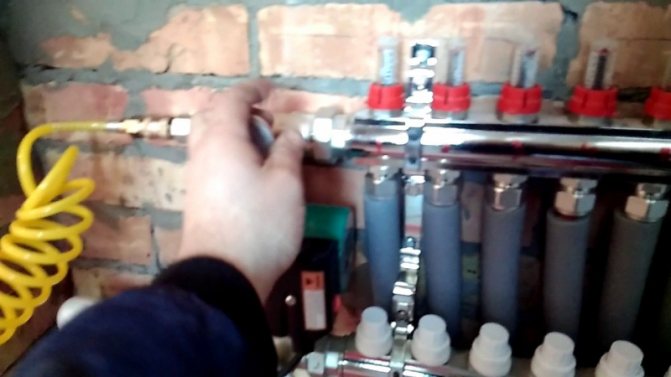

Often air enters the pipes when the system is depressurized
The problem of the formation of air masses in modern heating systems is very urgent. All owners of private and country houses, without exception, face it.
One of the main reasons is the depressurization of the system itself, problems in the risers and untimely replacement of individual devices. Often, air locks are formed at the time of flushing and connection of individual elements to the heating radiator.
The formation of such problems can also occur if the work is carried out incorrectly, aimed at the installation or installation of the heating system. In any case, this problem requires an early solution.
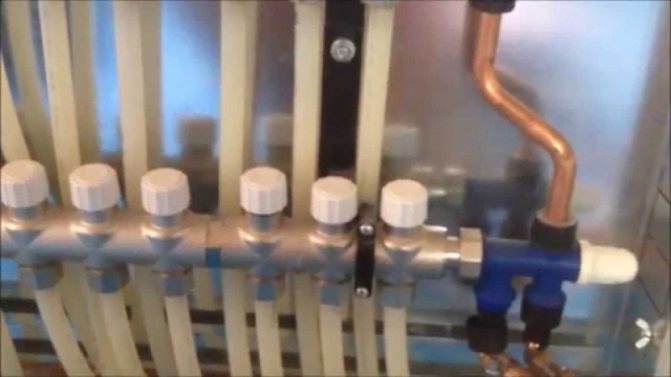

A scheduled air release is required before the first start-up. The air must leave the underfloor heating system before it is heated.
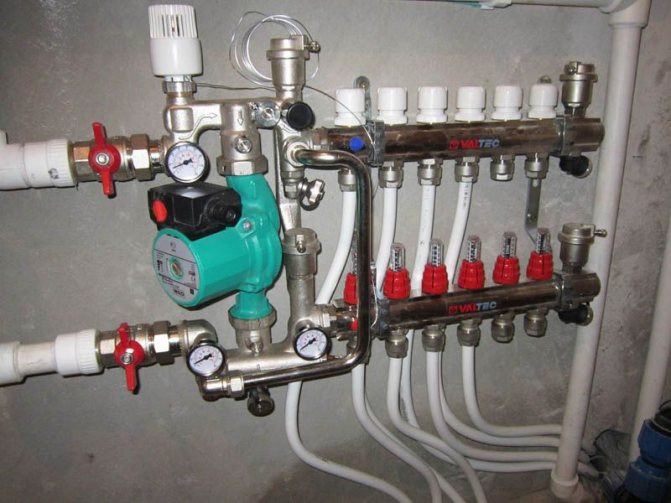

Most heating systems are able to function even after air bubbles enter the system.
In this case, circulation will be difficult due to the appearance of bubbles in the radiator, but the warm floor will stop heating up if air enters its system.
The small thickness of the pipes, combined with the peculiarity of the system, will not allow it to heat up, and the floors will be cold.
You can get rid of air during the operation of the system, but it is much easier to do this before the onset of the first cold weather when the mechanism is not running. After some time, bubbles may reappear, so the system must be monitored and carefully checked, periodically bleeding air.
Related article: PVC (metal-plastic) entrance doors to a private house
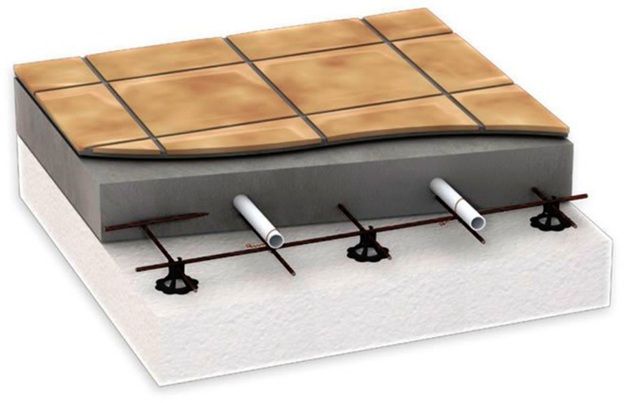

Bleed air in summer, before starting the heating system
Pipe distribution
The cooling of the water passing through the pipes must be taken into account during the distribution of the circuit. It is necessary to correctly lay the laying route. When installing, you should remember about some rules:
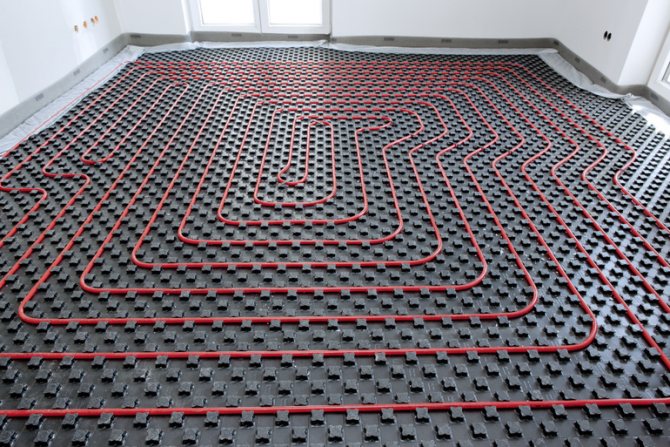

- It is always necessary to start the route from the coldest areas, for example, external walls, windows.
- It is necessary to lay "snake". This will ensure greater heating of the cold zones.
- In rooms with only internal walls, pipes are laid in a spiral. The distance between the turns should be doubled.
- It is worth remembering the hydraulic resistance. It increases as the length of the pipe increases. Bends also affect. You should try to achieve approximately the same resistance.
- There should be no joints on the contour. Couplings and other devices must not be used. This will significantly reduce the efficiency of the system and complicate its repair. Therefore, the purchase of materials should be made only after the final payment.
- Each room should have a separate circuit.
You also need to remember that cold rooms (verandas, balconies) must have their own line.It is not worth combining them in one circuit with living rooms, since the heat transfer in different parts of the circuit will differ.
How problems arise
The parts of the system that are connected to the radiators can be quickly diagnosed. They are located indoors, so noises are heard when the air passes through. The lowered temperature of individual sections of the batteries, where gas "plugs" have formed, are determined by touch.
But the pipeline, hidden deep in the concrete screed, is well insulated. If the cabinet with a manifold comb and a pump is installed away from living rooms, extraneous sounds will not be heard. Malfunctions are identified by a significant difference in heating in different circuits.
The following list shows the reasons that contribute to the penetration of air into the coolant:
- Replacement of cranes and other system elements;
- Faulty state of automatic devices that are designed to remove air from the system;
- Laying the pipeline route with large differences in height;
- Significant change in pressure level during operation. With a low head, voids may form at the top points;
- Excessive heating of the coolant, accompanied by the release of gases. Some types of chemical compounds can cause similar negative processes;
- The filling process after the summer period was carried out too quickly, therefore not all the air was removed;
- When installing the system or later, the tightness of the connections is broken. In the worst case, the leaks formed inside the concrete screed. For this reason, after the installation of underfloor heating, a thorough check is performed using increased pressure.
Advantages and disadvantages
One of the main advantages of installing a warm floor is uniform heating of the entire area. The heated air spreads vertically, so that the legs are always comfortable, and the head remains relatively cool.
The most effective laying of such a system is shown in rooms with high ceilings. The air does not become excessively dry and the entire apartment is heated evenly. Installation of a water-heated floor is economically profitable in the future, since it consumes less energy than radiators.
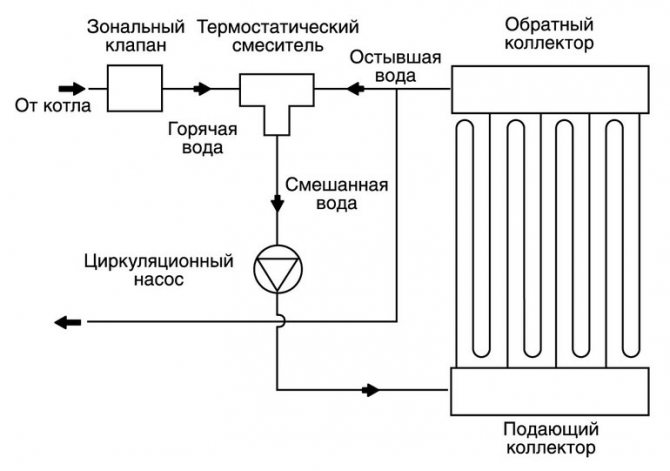

Laying pipes in bathrooms has its own difficulties... Most often they are associated with a heated towel rail, which leads to excessive heating of the floor.
Also, difficulties appear in apartments with low ceilings.... This is due to the fact that the thickness of the screed must be substantial.
It is harmful to lay underfloor heating under furniture
The wrong decision would be not to mount the warm floor under the furniture. There are several reasons for this.
Like any adequate family, you may also have a desire to rearrange furniture. Learn some Feng Shui and decide to close the window with a wardrobe, and move the bed to the corridor))). And as a result, you will have cold zones, and the furniture will still be on the warm floor.
The second and most important factor. Floor surface temperature with proper installation of underfloor heating will be only 28 degrees. This temperature will not in any way affect your furniture and it will not dry out in any way and, moreover, will not emit harmful substances. This applies to furniture made of chipboard, fiberboard and others.
Infrared radiation


The harm of infrared underfloor heating today remains the subject of controversy among specialists in various fields of knowledge. According to the manufacturers, this type of construction works in the safest spectrum of radiation for the human body. The background radiation is noticeably lower than even that of a simple TV, so it's difficult to talk about the harm of this technology option.
During operation, the infrared floor heats up all objects in contact with it (furniture, for example). In this way, part of the energy is transferred to other objects and intense heating of the room is noted.
Harm can be observed in case of excessive intensive use. In such a situation, a person may experience constant pressure on the body, which leads to negative consequences in the form of increased fatigue and periodic pain in the joints. Therefore, it is important to control the amount of floor work.
The formation of air masses in the underfloor heating system
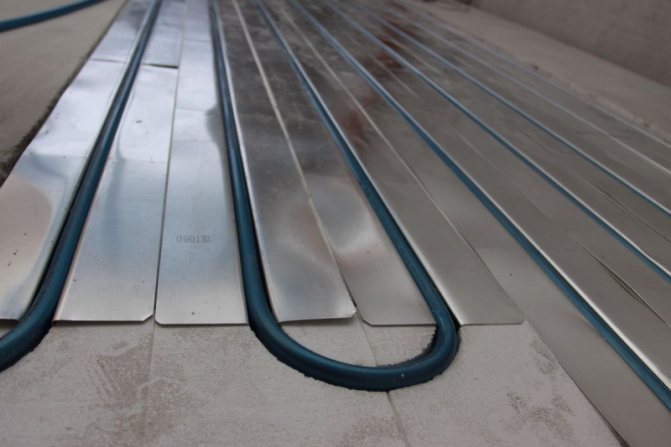

A pump is useful for bleeding the system.
How to release the air that has accumulated in the system will depend on the event that led to this result.
Some circumstances require early intervention, while others are not capable of causing severe damage to the system.
If the underfloor heating was installed with tangible differences, it is worth getting an additional pump for pumping the coolant.
It is recommended to install several automatic air vents to help release air masses from the system. One is installed on the return lines, while the second should be on the supply.
Running the circulating pump will also help drive out excess air. The more air has accumulated, the louder the circulation pump will work. It is worth noting that the pumping of the system must be carried out at maximum speeds. This will significantly save time and allow you to completely remove air from the system. If one has recently been pumped, but the air has already collected again, the problem may be in the pump itself.
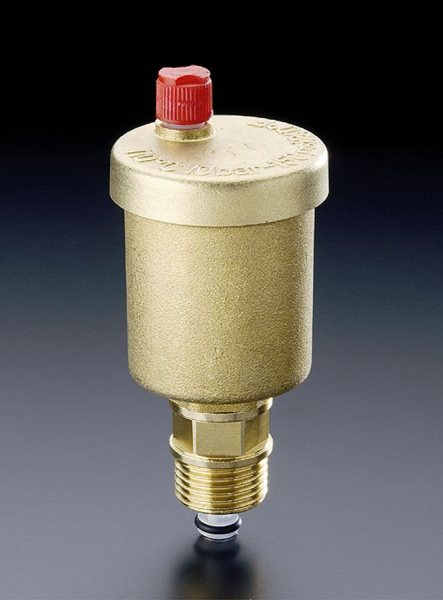

Air vent
When the comb is installed, each circuit is closed in turn, while the air vent must be open on each of them. It is necessary to release the air gradually, therefore, after cleaning the first circuit, the next one opens. The descent is carried out in stages and only one circuit should be open at the time of bleeding.
If this procedure did not give the expected result, the next airing should be done no earlier than a few days later.
For proper cleaning of the system, a person must understand the device of the comb and understand the principle of its operation. If you do not have the necessary knowledge, you should seek help from specialists. air release, see this video:
Recently, separators have become increasingly popular, whose function is to automatically remove air bubbles from the system, which greatly simplifies the further operation of the entire system.
Design features
In advance, it is necessary to take into account the details that distinguish certain equipment. So, in some situations, the built-in boiler pump is used to circulate the coolant along all circuits. For a large facility, its performance may not be enough, so you will need to install a separate power unit.
When using radiator heating, routes are created with a minimum number of turns, without sharp corners. By adding slopes towards the boiler, natural circulation can be ensured by gravity.
Long pipelines with a lot of bends are installed in warm floors.
It is more difficult to pump water through such a system. They use exclusively compulsory techniques. In case of errors in the calculations, the power of the individual pump will not be enough for long-distance circuits. In this case, their poor heating cannot be eliminated by removing air plugs. The system will need to be upgraded.
The rake regulators must be correctly adjusted beforehand. In addition to mechanical flow meters, valves with electric drives are installed. Such devices change the flow rate of the coolant taking into account the readings of the temperature sensors.
Automated regulation system
Electric underfloor heating is dangerous due to the effect of electromagnetic waves on the body
H2_2 Heating in this way is provided by passing an electric current in special mats.As a result, thermal energy is released, accumulated by the heat-insulating substrate and released by means of heat transfer to the environment. In this case, electromagnetic oscillations arise. It is believed that the human body is harmed by the high-frequency effects of such vibrations.
To establish whether there are pros and cons to such a heating method, it is enough to recall physics. The highest penetrating power is possessed by waves of high and ultrahigh frequency - from 10,000 Hz and more, which is why they are used, for example, in heat treatment processes to implement certain structural changes in materials at a considerable depth.
Such waves pose great harm to human health: his body quickly gets tired, headaches appear, memory decreases, irritability appears. The list can be continued, only this has nothing to do with the electromagnetic oscillations generated by a working electric warm floor, since the operating frequency of alternating current in our networks is 60 Hz.
But even this radiation reduces its initial intensity, since during installation, a vapor barrier film is always laid on top of electric mats, which absorbs part of the electromagnetic waves. Thus, an electric warm floor is not harmful to the human body.
Exposure to electromagnetic waves
The harm of electric underfloor heating is much more pronounced. The waves created in the process of work belong to the electromagnetic spectrum, which has a significant effect on all systems of the human body. It is better to use cables with the fewest wires to reduce the electromagnetic load on the body.
Consequences of improper installation
Underfloor heating turns out to be a fairly simple technology and specialists who do not have the appropriate qualifications often undertake its installation. As a result of this approach, mistakes can be made that create inconvenience to users.
- Wrong choice of topcoat. Many types of flooring are not designed for constant heating. Parquet can crack, and linoleum can collapse or deform. Therefore, it is important to properly decorate the room and choose a suitable covering.
- Lack or insufficient number of thermostats. A decrease in the control over the created temperature worsens the general microclimate, leads to overdrying of the air.
- Lack of adapted ventilation. An increase in air temperature without adequate ventilation leads to stagnation of the air and stimulates the formation of mold.
In practice, non-professional installation and adjustment of the structure lead to a negative attitude towards the warm floor, although in fact the fault here is not on the technology, but on its incorrect use.
Why it is necessary to remove air
The formation of voids reduces the efficiency of the heating system. Pumping equipment, like other components, is less efficient. It takes more resources to provide a comfortable indoor temperature environment for users.
With an increase in such voids, the pressure gradually decreases. After reaching the minimum level, the corresponding signal is sent to the boiler control unit. In addition to electronic devices, mechanical means of similar purpose are used. This is an emergency situation, so the automation turns off the supply of gas or other fuel.
For the subsequent activation, you have to manually raise the pressure. But there are many gaseous inclusions in fresh water, therefore negative processes are accelerated. The equipment will shut down more often.
It is dangerous to leave it in this state unattended. If you do not remove the air while eliminating the original causes, the technique will completely lose functionality.
It should be remembered that oxidation that destroys metals occurs in the presence of water and oxygen. The addition of a new coolant activates the corresponding negative processes. In this operating mode, the durability of the heating equipment is reduced.
The appearance of air "plugs" in the heat exchange units of the boilers should be excluded. These parts are exposed to very high temperatures.
If the heating is not uniform enough, the heat exchanger will be damaged without the possibility of recovery.
The above reasons are enough to understand the need for preventive measures. Their implementation will prevent complex breakdowns and costs associated with restoration work.
Fiction or real harm
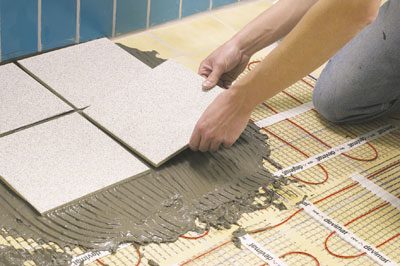

The harm and benefit of underfloor heating is something that you should understand before installing it at home. What accusations against this heating system are fiction, and which ones are really true?
The following negative characteristics are attributed to this heating system:
- Release of toxic substances when flooring is heated. This assumption can be immediately refuted. Even if you lay linoleum or PVC tiles on the floor, no toxic substances will be released into the air... To harm a person from fumes from the surface of low-quality materials, you need to decently heat the floor. But does someone walk around their home like on hot coals. The coolant temperature is 45C, and the floor is usually heated up to 28C, which is quite safe.
- Harmfulness of electromagnetic radiation. Underfloor heating is made not only from pipes that cut into the heating system. The design of this heating system is of several types: heating mats, infrared thermal film, electric cables. All these options imply a connection to the mains, and like any household appliance that runs on electricity, such warm floors emit electromagnetic waves. However, no matter which cable is used for the construction of the floor, single-core or double-core, the radiation intensity will be negligible. Nevertheless, doctors do not recommend increasing the level of electromagnetic radiation in your home. Many consumers are thinking about the dangers of infrared underfloor heating. In fact, this radiation is safe for humans.
- Furniture must not be placed on a warm floor. But this is just the opposite. If you do not provide for the installation of heating elements in areas with furniture, then what to do when you want to update the room and make a rearrangement? It turns out that the sofas and wardrobes will move to the heated areas of the room, and you will have to walk on the cold floor. This is not rational. If you look at this issue from the point of view that the temperature of the coating can affect the durability of furniture items, then this is definitely not worth fearing. The floor is not hot, and under the influence of 28C nothing will happen to the furniture.
- Walking on a warm floor is harmful. Why should this fear be true, if on the hottest days of summer everyone is happy to walk without shoes on the hot sand? Yes, and children love to take off their shoes and run barefoot on the warm ground, because adults themselves insist that this is useful.
- The warm floor dries out the air in the room. Of course, if you place the heating elements too close to each other, then the room will be too hot, and this threatens that the mucous membranes of the eyes and nose will dry out. There is nothing left here, how to provide humidification of the room, regularly using a humidifier. But, if the floor design is thought out correctly, then this will not reduce the level of humidity in the apartment.
- Due to the warm floor, the room is very dusty. The idea of this heating system is not to dilute cold air with warm air, but to radiate heat, that is, it does not raise air masses from the floor covering. If a person is allergic to house dust, then there is nothing left to do about how to clean it more often, and it doesn't matter if the house has a warm floor. Breathing dust is harmful, nevertheless the wind raises whole clouds of dust on the street and few people think about its dangers.
The above accusations against the warm floor are mostly untrue. Of course, some of these problems come up, but this is always the result of improper installation of the heating elements.
Professional tips for removing air from a water floor
In fact, it is quite simple to remove air from the warm water floor system with your own hands. To remove, you will need to be patient and consistently follow the recommendations of specialists.
- All water circuits on the manifold are closed except one.
- At low speeds, the circulation pump is turned on. A pressure is created that exceeds the usual pressure by 15-20%. Time is given for the air masses to completely exit the system. The operation is carried out sequentially for each circuit connected to the manifold.
- The process is periodically repeated for 2-3 days until the complete elimination of air layers.
- Only after the air gaps in the heating pipes have been removed, they turn on the heating of the coolant.
Recently, special separators have appeared. The separator's function is to automatically remove air masses from the system. The air is removed by the separator automatically, which increases the comfort from the operation of warm floors.
Air removal algorithm
In the process of moving the coolant through the system, gas accumulates at the highest points. For the underfloor heating system, this is a manifold distributor (comb). During installation, Mayevsky taps or automatic air removal devices are screwed into them.
The following is a typical sequence of correct actions:
- Many modern pumps of this type are equipped with a step speed regulator. It is set to position "1", which corresponds to the minimum performance. You will have to spend more time, but the removal of gases will be neat.
- Cover all but one contour. Further, similar operations are performed sequentially in other areas.
- The screw of the Mayevsky valve of the first circuit is turned counterclockwise with a slotted screwdriver. Before this, the polymer insert is turned with the hole down, a suitable container is placed to collect the liquid.
- After the air has escaped, the screw is turned in the opposite direction until the valve is completely closed.
- Despite the fact that the minimum engine speed is set, the circuit will have to be pumped repeatedly. After the first release of gases, the pump is turned off. Wait for the accumulation of air in the tap, open the tap. Then, power is supplied to the electric drive again, the coolant is driven off at a slow speed for several minutes.
- This procedure is repeated 3-4 times. After - shut off this circuit with a crane and go to the next.
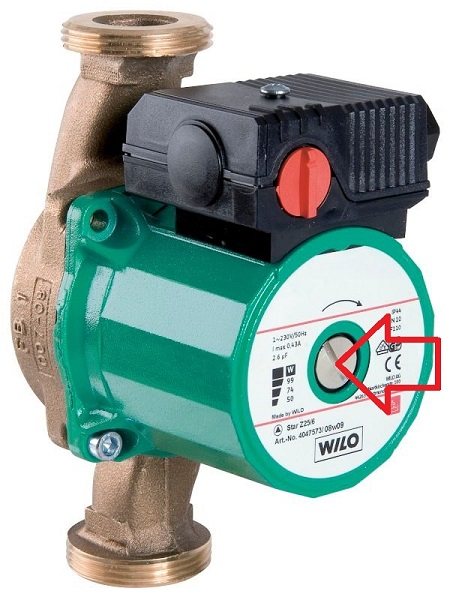

Typical pump with a red shaft speed control knob
If the pump is installed above the manifold, or only a standard unit (heating boiler) is used, air can also be released from it. To do this, slightly loosen the screw located in the center of the cover. In the picture above, it is marked with an arrow.
After completing the entire set of working steps, it will be necessary to raise the pressure to the nominal level. It should be understood that air will enter the system again during this procedure. Therefore, it is possible that you will have to release it again.
Harm or benefit of underfloor heating: arguments


The advantages of infrared underfloor heating over other design options are obvious, but even this type of equipment carries some harm. Underfloor heating systems used in modern construction have a set of practical advantages that determine their popularity:
- saving heating costs due to uniform and controlled heating in the room;
- selection of the optimal technology depending on individual wishes and tasks;
- uniform heating of the room and prompt correction of the microclimate in the rooms;
- reduction of morbidity due to the absence of sudden changes in temperature and constant maintenance of heat.
These are the recognized benefits of the technology. The main argument in favor of the technology is the equalization of temperature and the creation of a comfortable microclimate, which is especially important in houses with poor thermal insulation.
The negative points and harm from using the structure are the following points:
- negative impact on the human respiratory system due to changes in the level of moisture in the air;
- local overheating of the body due to contact with a warm surface;
- creation of an additional source of dust in case of improper installation or choice of coverage (dust from crumbling parquet).
The leading argument against the use of underfloor heating is the violation of natural biorhythms and thermal characteristics of the body due to excessive heating of the room.
Additional recommendations
As the complexity increases, the cost increases, but the overall reliability of the equipment decreases. The control valves on a manifold can be used as an example. Mechanical drive designs cost a little.
Their characteristics have been worked out by many years of practice, so breakdowns are rare. Servos are more expensive. The corresponding systems contain electronic components, miniature electric motors, wire connections, sensors. There are more components that can fail.
Components for removing air from the system should be selected taking into account design features. Simple Mayevsky cranes are capable of performing their functions flawlessly for a long time. They do not need to be adjusted during operation. Automatic devices are more complicated and more expensive. They can be damaged by dirt, so protection from mechanical impurities is needed.
Sometimes the intense formation of air jams indicates a violation of the integrity of the joints, other damage. Automatic diverters are so efficient that you won't notice problems in the early stages.
It is uncomfortable to sleep on a bed with a warm floor
But this moment really takes place. The temperature from the warm floor, at the level at which you sleep, is usually 23 degrees. A comfortable sleep temperature is 18 degrees. Therefore, sometimes people feel uncomfortable.
There are two ways to solve this situation:
- Make a warm floor with a large step. For a water heated floor in the bedroom, it can be 20 mm (for central Russia)
- Install a room thermostat and connect it to the underfloor heating manifold. On it, you simply set the temperature and sleep comfortably.
Pros and cons of underfloor heating in the bedroom
To understand whether it is possible to make a warm floor in the bedroom, it is worth knowing its positive and negative sides. The former include the following:
- A warm floor in the bedroom will forever get rid of damp corners, the development of fungi on the walls, as it eliminates an increase in humidity.
- It is impossible to get a burn from such a heating system, since the surface temperature is comfortable for walking barefoot - it is no more than 30 degrees.
- There is a self-regulation function using additional devices. They automatically control the temperature regime day and night.
- The installed heating system is invisible to outsiders, you can apply any design that is limited only by your imagination.
- There are no drafts in the room.
- Heating savings are achieved by 30%.
- The room is easier to maintain order and cleanliness.
Disadvantages of underfloor heating:
- Comparative high cost.
- Difficulty in installation, especially during maintenance.
- Unrepairable.
- High requirements for the floor covering, which is mounted on the heating system - it must have a high thermal conductivity.
How to expel air from a warm water floor? - Home Craftsman's Guide
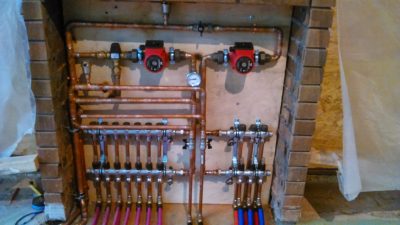

9 285
Air accumulation in the heating system prevents its proper functioning. If not removed in time, performance will deteriorate.
In such conditions, the likelihood of damage to expensive equipment increases. To eliminate unnecessary risks and unnecessary costs, you need to know how to pump the heated floor yourself.
The technique is quite simple, therefore, in most cases, contacting specialized specialists is not required.
Underfloor heating types
There are several types of underfloor heating today. The choice depends on the needs of each individual person and the characteristics of the connection to heat sources.
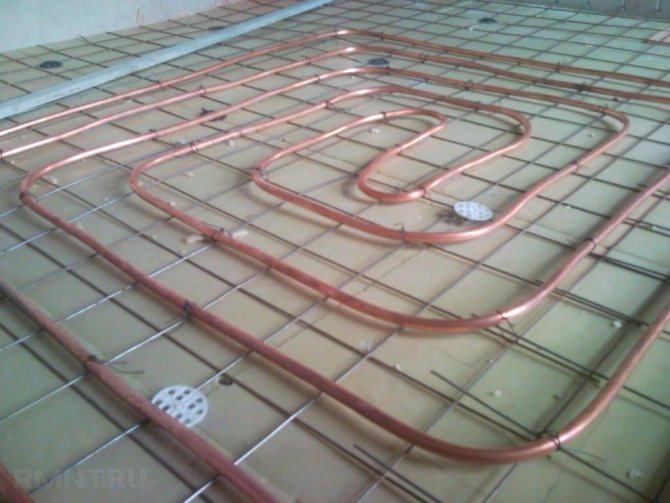

Water heat-insulated floor
Water
Water floors require a thick screed and high costs during the installation phase. For water pipes, the correct installation of the collector, the drawn diagram of the "snake" of the pipe, the correct installation of this pipe are required. All this is associated with certain difficulties. In addition, in order to correctly outline the places of passage of pipes, you will have to contact a heating engineer.
But at the stage of operation, a water floor is more economical than an electric one. The cost of heating water has always been less than the cost of electricity. The only drawback of the operation of water heating systems is the failure of the collector. The collector must be replaced every 5 years, since the old one quickly clogs and corrodes, which can lead to damage to the system as a whole.
Installing sensors and a thermostat can save even more money. So, using a timer, you can set the heating before coming home from work, or warm up the floor more before going to bed - everything has been done not only to save money, but also for human comfort.
To connect a warm water floor in the bedroom, it is necessary to correctly configure the boiler. You cannot heat the whole house with water at a temperature of 70 degrees and feed it into a warm floor. Underfloor heating is a low-temperature system, the coolant in it should not exceed 60 degrees.
Unfortunately, this floor cannot be installed in the apartment. Due to the additional water consumption, the hydraulic regime of the building's heating system changes greatly. This can cause the system to become unbalanced, resulting in the failure of individual radiators throughout the home. Therefore, not a single BTI will issue a permit for the installation of a water-heated floor in an apartment. Or rather, not for installation, but for connecting this floor to the citywide centralized heating system.
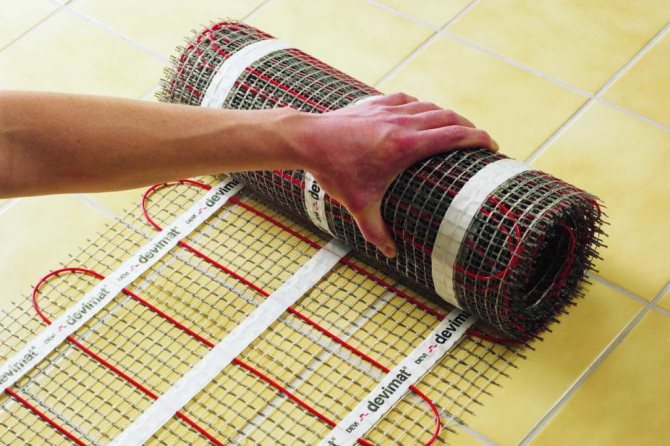

Electric underfloor heating
Electric
The electric floor was designed specifically for heating in apartments. This heating cable is sold in two variations:
- In the form of a single cable, which is fastened with staples or fits into the grooves of rubber plates
- In the form of a thin cable strung on the base mesh that simply rolls out on the floor
In the second case, installation is easier: you do not need to draw a "snake" of the warm floor, just roll out the mesh, fix it with brackets and continue the installation of the floor. For an electric underfloor heating, there is no need for a thick screed. If the water floor makes the entire floor surface a heating device, then the cable itself is a heating device, so there is no need for a thick screed. The cable is less susceptible to mechanical stress. All this, together with operation from a simple outlet, would make the electric floor the market leader, if not for the price of electricity. Special sensors and regulators can significantly reduce costs, but operating costs will still remain at a fairly high level.
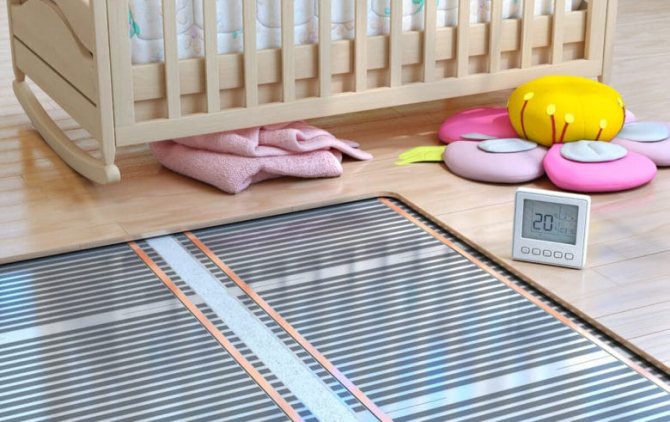

Infrared film floor
Infrared film
Infrared film is an intermediate model between water and electric underfloor heating in terms of costs. For installation, no screed is needed at all, you can use chipboard boards, which are then covered with a laminate or any other coating. The principle of operation of infrared film is the passage of electricity through a thin aluminum film fixed between two insulators. Due to the small cross-section of aluminum, electricity consumption is also reduced along with heat dissipation.
This option is considered the most successful, but it is not suitable for large rooms, since the likelihood of mechanical impact on the film through the floor thickness increases. And through a floor that is too thick, heat simply will not reach the room.
Therefore, in small rooms and apartments, electric floors and infrared films are used, and in large rooms of cottages and private houses, water floors.
How to remove, drain, expel air from a warm water floor: step by step instructions
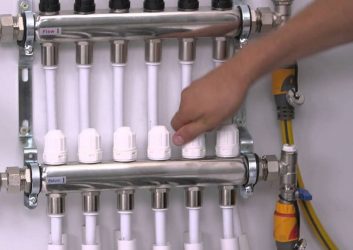

How to remove air from a warm water floor yourself? Can you do it yourself? The simple answer is yes. You can lower the airiness without resorting to the services of a specialist.
In this article, you will learn how to expel air from a warm floor and what is required for this. We will also talk about the reasons for the appearance of air jams and their consequences. And most importantly, you will learn what to do to prevent air congestion further.
Reasons for the appearance of air in warm water floor systems
Before considering the question of how to expel air from the underfloor heating pipe, let us determine the reasons leading to the airing of heating systems. The formation of air jams is usually caused by violations of the rules for the design, installation and operation of warm water floor systems.
Distinguish the following reasons for the appearance of air in them:
- Incorrect calculation of heat loads.
- Errors in calculating the lengths, number of branches and diameters of pipelines.
- Incorrect selection of pumping equipment, safety and shut-off and control valves.
- Laying pipelines with unacceptable differences in height.
- Use of defective equipment and materials when installing a warm floor.
- Poor performance of installation work associated with leaks in joints and threaded connections.
- Failure to comply with the sequence of the algorithm of actions during the initial filling and starting the system into operation (initial, as well as subsequent ones after repair).
- Failure to comply with the temperature regime during operation.
- Leakage of the pipeline due to a defect or long-term operation.
- Disruption of the circulation of the coolant in individual circuits (branches) of the system, caused by a decrease in the pressure and performance of the pump due to its malfunction.
- Failure of the automatic air vent, safety and shut-off and control valves.
- Allocation of gases contained in the coolant due to the special temperature regime.
Warm electric floors: pros and cons, types and features
Consequences of air congestion
Possible consequences depend on the installation site, as well as the design features of the heating system.
- Underfloor heating from a centralized source of heat supply: partial or complete cessation of heating, it is possible to freeze pipelines in corner rooms;
- Houses with underfloor heating and heating devices from a centralized heat supply source: partial or complete cessation of floor heating;
- Underfloor heating from an individual heating source: partial or complete cessation of heating, an emergency stop of the boiler and freezing of the heating system is possible;
- Houses with underfloor heating and heating devices from an individual heating source: partial or complete cessation of floor heating, frequent stoppages of the boiler.
Taking into account the specific design of the "warm floor" heating system, namely: the presence, depending on the area, of one or several water circuits per room and a separate wiring for each room, a complete cessation of circulation is practically impossible.
Only in the event of air jams on all horizontal branches at once in all rooms, the movement of the coolant and the functioning of the system will stop.
We expel the air
It is a well-known fact that air in heating systems accumulates at the top points of the system. For underfloor heating systems, this is a collector comb, where air discharge devices are installed (Mayevsky taps, automatic air vents or conventional ball valves).
Mayevsky's crane installed on the underfloor heating manifold.
To remove air from the underfloor heating system, the following steps must be performed in a specific sequence:
- Shut off all horizontal branches on the manifold.
- Remove air from the circulation pump housing.
- Open the Mayevsky valve or the ball valve on the comb (in the absence of automatic devices).
- Open the first water circuit, start the pump, setting the regulator to the minimum capacity.
- After waiting for the appearance of water from the air outlet of the pumped branch, turn off the tap and turn off the pump.
- With an interval of 5 - 6 minutes, repeat the operation several times until the air is completely removed.
- Do all the operations with the rest of the contours in the same way.
- Then, switching the pump to maximum performance, bleed the entire system as a whole, periodically releasing air.
- Taking into account the likelihood of the formation of new plugs during the subsequent warming up of the system, it is necessary to release the air again.
The system can be put into operation only after all these measures have been taken and its complete check for tightness. To work with Mayevsky's cranes, you must have a special key or slotted screwdriver. It will be useful to prepare a special container for drained water.
When using automatic gas vents or separators as air removal equipment, no additional means are required. It must be remembered that with an increase in the complexity and number of equipment used, the cost increases, and the reliability of the system as a whole decreases.
The lower the degree of automation of the process, the higher the efficiency of warm floors. Adjustable manifold valves with a mechanical drive, Mayevsky taps are easy to maintain or replace with your own hands.
Repair of more complex equipment with servo drives and automation units requires the participation of specialists. In addition, automatic air vents, while effectively removing air locks, do not always allow you to immediately detect leaks in the system.
How to prevent air congestion
In order to prevent the airing of water heated floors, the following rules must be observed:
- Regularly inspect the system for leaks and other defects;
- Periodically monitor the temperature and pressure of the coolant;
- Systematically remove air from the circulation pump housing and collectors;
- If it is impossible to perform maintenance work or replacement of faulty equipment, you yourself must contact the specialists;
- It is also better to entrust the adjustment of the collector comb to the master. You can find a specialist at the portal for the selection of private masters.
We hope that after reading the publication, you have learned how to remove air from a water-heated floor. This article written by engineer
Surface ceramic floor coating is harmful
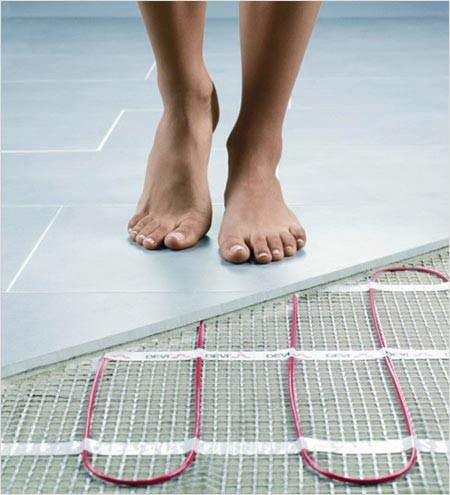

The pros and cons of the tile covering in the underfloor heating system are that the tile is characterized by a high value of heat capacity. Therefore, heat dissipation and radiation have a slow but constant effect. This suggests that it will take a long time to warm up the room, but the effect after shutdown lasts longer. At the same time, there is no vapor barrier film, which contributes to an increase in the thermal efficiency of this heating principle. In rooms such as the kitchen, where the increased temperature background is almost constant, such heating systems are harmful. Especially for women who spend a lot of time in the kitchen. The harm is caused by the constant exposure to elevated temperatures on the legs, which causes the outflow of blood. As a result, thermal radiation provokes the emergence and development of some gynecological and vascular diseases.Harm to the body from such systems can threaten with the frequent stay of the feet on such a coating for more than 3 - 4 hours. But with a short stay on such a floor, there is no danger to health, therefore, the installation of a warm floor system under a tiled floor, for example, in bathrooms, is quite safe.
Electric underfloor heating
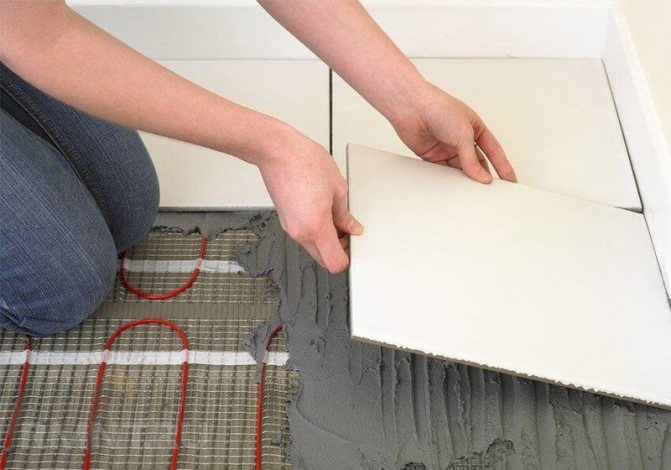

There are a lot of tales about electricity - that this floor is harmful to human health and that you shouldn't install it in your apartments! But guys are just "stories".
Let's think about what an electric underfloor heating, for example, under a tile!
The principle is simple - there is a cable inside which there is a heating element that heats up and transfers its heat to the tile in our example. That is, this is the principle of any electric heater. Ordinary oil radiators also work (they heat up the oil inside the radiator, which already transfers heat to the environment), ordinary "wind blowers" also have a heating element that, blown by the wind, from the fan deliver heat to the room. So the underfloor heating cable is also a kind of heating element, only of very low power.
Why are they dangerous?
An unresolved problem of airing can lead to serious consequences, from a drop in the efficiency of the system (due to the small diameter of horizontally located pipes), to its complete refusal to heat up, heat the room. You need to know how to remove air from a warm water floor.
Sources of
- https://AvtonomnoeTeplo.ru/teplye-poly/597-kak-vygnat-vozduh-iz-vodyanogo-teplogo-pola.html
- https://roof-tops.com/polezno/remont-polezno/montazh-tyoplogo-vodyanogo-pola/
- https://eurosantehnik.ru/vsya-pravda-o-vrede-teplogo-pola.html
- https://ZaOtravlenie.com/polza-i-vred/vred-teplogo-pola.html
- https://DekorMyHome.com/remont-i-oformlenie/kak-vygnat-vozdyh-iz-teplogo-vodianogo-pola-sovety-eksperta.html
- https://DomOtopim.ru/teplyj-pol/vred-teplogo-pola.html
- https://otravlenye.ru/polza-i-vred/pribory/vredno-li-ustraivat-u-sebya-doma-tyoplyj-pol.html
- https://laminatepol.ru/24463-teplyie-polyi-v-spalne-za-i-protiv.html
- https://stroypomochnik.ru/teplyj-pol-v-spalne-01/
- https://econet.ru/articles/163644-vredny-li-teplye-poly
- https://netholodu.com/teplyj-pol/vodyanoj/montazh/kak-spustit-vozduh.html
[collapse]


